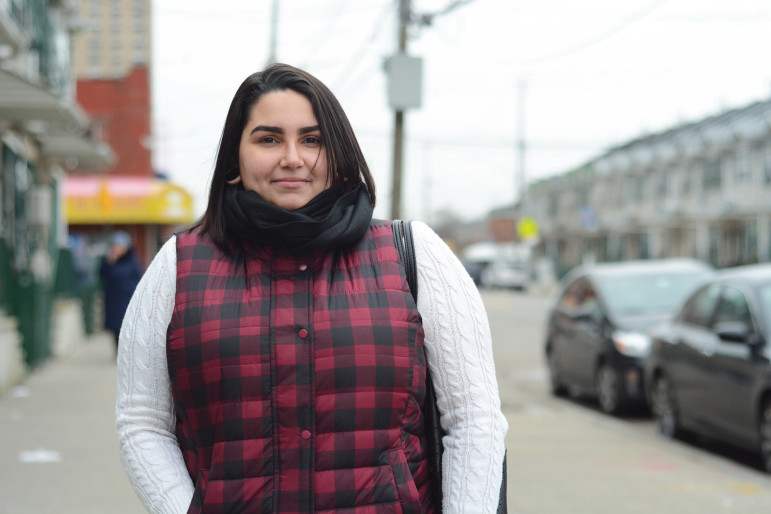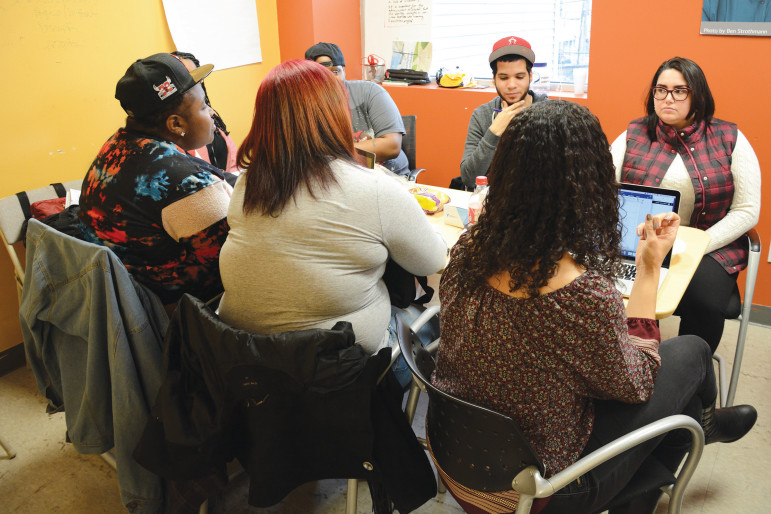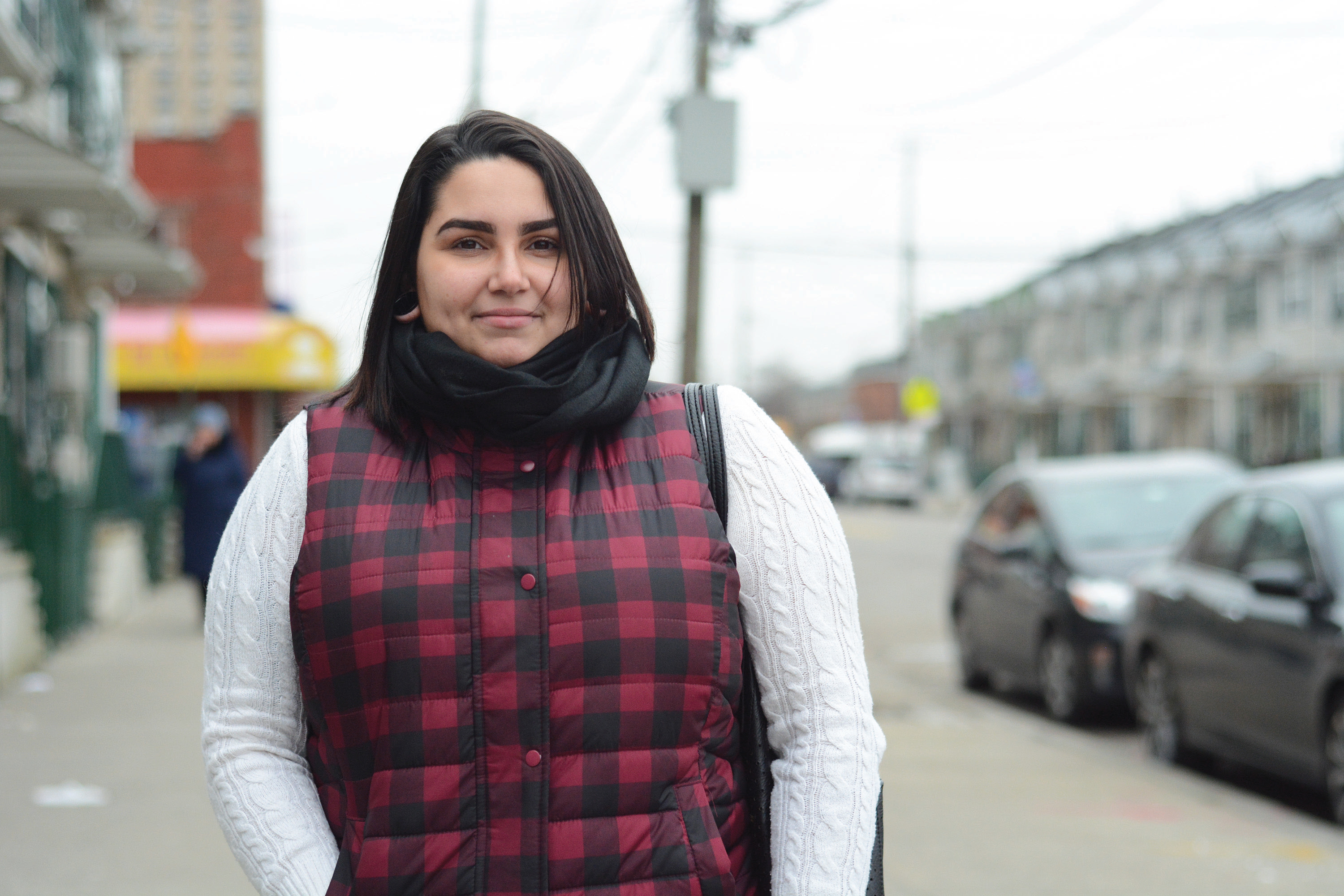
Photos by Gwen McClure
Kathy Rando once worried she wouldn’t graduate high school. But her foster mother (who later adopted her) reinforced the importance of an education and helped her study for her GED, and she has earned her associate’s degree.
NEW YORK —
Before moving from her biological mother’s home and into foster care at age 10, Kathy Rando was in the gifted program at her elementary school. But by the time she was 17, Rando had lived in upwards of 10 foster homes and spent four years in a residential treatment center (RTC), before finally dropping out of high school.
“School was not really my main priority,” said Rando, now 25. “It was just making sure I was OK during the day.”
For youth in foster care, ensuring that basic needs like shelter, food and safety are met takes priority, often leaving education as an afterthought. Many foster youth have experienced trauma, which has an adverse affect on a child’s ability to learn, and children often change schools when they move into a new home. In New York City, the Administration for Children’s Services (ACS) estimates this happens between 15 and 20 percent of the time, causing students to fall behind in school.
Experts point to the lack of steady adult advocacy and care, and agree that getting children into the right family placements can be the difference between educational success and failure.
The power of permanency
“In the success stories, family really is the answer,” said Amber Williams, family recruiter for You Gotta Believe (YGB), an organization focused on finding permanent homes for preteens, teens and adults in the New York City metro region.
New York state has the fourth-highest population in the nation and the third highest number of children in foster care, with just under half of them served by NYC ACS. Though the agency hopes to produce an educational assessment of students in the foster care system during the next year, there is currently extremely limited data on educational outcomes for these students.
Nationwide, this information is also lacking. Statistics suggest that 58 percent of teens in the foster care system graduate by the time they are 19, and that those who are adopted do better than their peers still in care, graduating at a 23 percent higher rate. But the source of these numbers is unclear — agencies cite studies which cite other studies, and sample sizes are small and geographically limited, calling into question their accuracy. Still, studies often conclude that placement with supportive families allows for significantly better outcomes, which is largely accepted by those working in the field.
For Rando, this was certainly the case. She was matched with foster mother Joan Siegel and moved from the RTC as a 16-year-old, beginning anew at school a few months later. By this point, she had fallen behind, felt frustrated with her math classes and says she was tired of feeling stupid. She dropped out shortly after, but her new foster mother reinforced the importance of an education and helped Rando study for her GED, which she completed.
“If it wasn’t for her pushing me, I wouldn’t have done it,” Rando said. “That’s the main factor.”
Today, Rando lives with her 7-year-old son and Siegel, who has since adopted Rando. She has completed an associate’s degree in graphic design and works with Williams as an advocate for other young people at YGB.
Partnering with DOE
ACS subcontracts with agencies including YGB, helping to place children and teens into appropriate, caring foster and adoptive homes and to meet their broader needs. Though each agency takes its own approach, the goal is to get children and teens into an environment where they have an advocate and as much consistency as possible.
ACS, which serves approximately 10,000 children and teens in foster care, attempts to keep students in the same school when they move, going so far as to provide car services for some.
“We used to teach people ‘don’t get attached,’” said Williams. “That’s actually probably the opposite: You do need to have a stable environment.”
Oftentimes placements don’t succeed, and while children struggle to settle into a new environment and get to know new people, so too is the staff of the new school getting to know the child. ACS and the NYC Department of Education (DOE) have had an information-sharing partnership since 2001, allowing ACS to access information about each child and make informed decisions on how to best help. A spokesperson for ACS says the partnership has evolved significantly, now allowing for monthly updates of detailed, child-specific educational information.

Rando meets with colleagues in a weekly staff meeting at You Gotta Believe, where she works as a youth advocate.
“It’s only recent that we’ve been able to get a plethora of information necessary to really look at each child individually and say where the need is and what kind of programs we need to develop,” said Kathleen Hoskins, director of the ACS Office of Education Support and Policy Planning.
Still, the information usually doesn’t arrive quickly, and so subcontracted agencies do their best to develop as much programmatic support as possible. At YGB, part of Rando’s work is in the mentorship program, which helps young adults deal with multiple issues including navigating their educations.
‘We’re not stopping’
At The New York Foundling, an agency that finds homes and facilitates adoptions for children, each child is assigned an education specialist who works closely with a team, including foster parents, to get the child the appropriate educational services so that they can stay on track in school. Liyan Bao, vice president of permanency placement at The New York Foundling, credits this specialized attention as well as the multiple programs they offer with helping to push children further in school, ideally on to a post-secondary education.
“We’re not stopping to say high school or a GED is enough. In terms of our work with kids and families, it’s all about really promoting well-being and getting the best education that you can,” Bao said. “We have quite a number of successful youth who are actually participating in college.”
Many agencies have their own programs, but ACS also provides services for children and teens in smaller agencies, since these usually have fewer programs. ACS’ pilot College and Career Corner pairs students who don’t have planning services available to them with one-on-one mentors — college students or college graduates who have been or are in the foster care system themselves — to help the students navigate post-secondary education planning. CCC also provides referrals to college support programs so students aren’t on their own once they’ve taken the leap into post-secondary education. Other support services include SAT prep, financial aid guidance and one-off opportunities, like a college tour.
Middle school students in New York City apply for high school, so ACS also partners with DOE’s citywide high school fair to host a High School Goal Weekend, which offers high school admissions counseling targeted to students who have been adopted or are in foster care. Volunteers and student enrollment counselors help students better understand the admissions process, and support them to be able to ask questions at the citywide fair and fill out their applications.
ACS’ Hoskins emphasizes the agency wants children to learn to advocate for themselves and know their rights. “We thought we’d have higher rates of graduation success if children felt more empowered on their high school applications,” she said. “We want our kids to make informed choices.”
Guidance for parents
ACS is also developing a guidebook to help parents navigate departments of education, recognizing the difficulty of understanding a complex school system. For adoptive mother Nicole Hayward, this has been one of the hardest parts. Her son came to live with her as a 14-year-old, and her daughter as a 20-year-old, and since then she has battled the district where they live in Long Island, New York. Her son had moved more than 25 times during his nine years in foster care, and naturally fell behind.
After placing him in school programs that were a poor fit, eventually Hayward said her school district in Deer Park, New York, pushed to send him back to a residential treatment center, where he had been living when Hayward and her husband decided to foster him. With the support of the staff at YGB and other resources that helped her understand her son’s rights, Hayward refused to sign the paperwork, insisting that they find him an appropriate placement where he could continue to live with his new family.
“If a child doesn’t have permanent parents, they definitely need to connect with someone who can help, whether it’s an agency or just a friend,” she said. “Children really don’t have a voice when it comes to their education.”
Hayward’s dedication paid off. Her son is now in a private school called Woodward Children’s Center. Hayward said that her son, now 18, has finally found a successful placement. Academically he’s at a higher level of achievement, his behavioral issues are nearly nonexistent, and, importantly, he’s made friends.
“An informed parent is a very powerful thing,” Hayward said.

Photo courtesy of Nicole Hayward
Nicole Hayward, (above, with son)
Not enough numbers nationwide
“Up to now, child welfare agencies and schools could get away with not paying much attention to the school performance of foster youth because there was no publicly available data on the subject,” said Mark Courtney, a professor in the School of Social Service Administration at the University of Chicago and an expert on outcomes for children in foster care.
But improving educational outcomes for students in foster care is one of the goals of certain provisions of the Every Student Succeeds Act, which President Barack Obama signed into law in December.
Among other things, ESSA requires states to begin to track high school graduation rates for children in foster care, including four-year adjusted cohort graduation rates and, as states see fit, graduation rates for students who take longer than four years to finish high school.
“Routinely and publicly shedding light on how these youth fare educationally will empower advocates to push for increased attention to the educational needs of foster youth by schools and the child welfare system,” Courtney said.
Advocates say the requirement for states to start tracking graduation rates and other key outcomes for children in foster care is a critical development that should hopefully provide a clearer picture of the challenges that children in foster care face when it comes to staying on track to receive their diplomas.
“Assuming that these reporting provisions of ESSA are actually implemented well, which is by no means assured and will undoubtedly take time, I believe that it will ultimately have an impact on graduation rates for youth in foster care,” Courtney said. YT
–By Jamaal Abdul-Alim
More related articles:
Federal Education Law Delivers Vital Protections for Foster Youth
Lawsuit Alleges Expelled Students Get Substandard Education

























